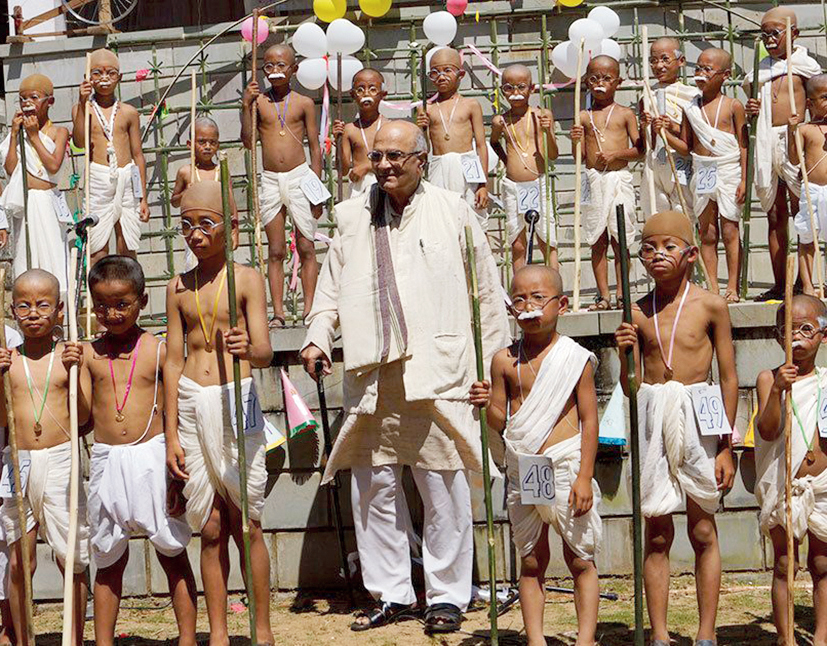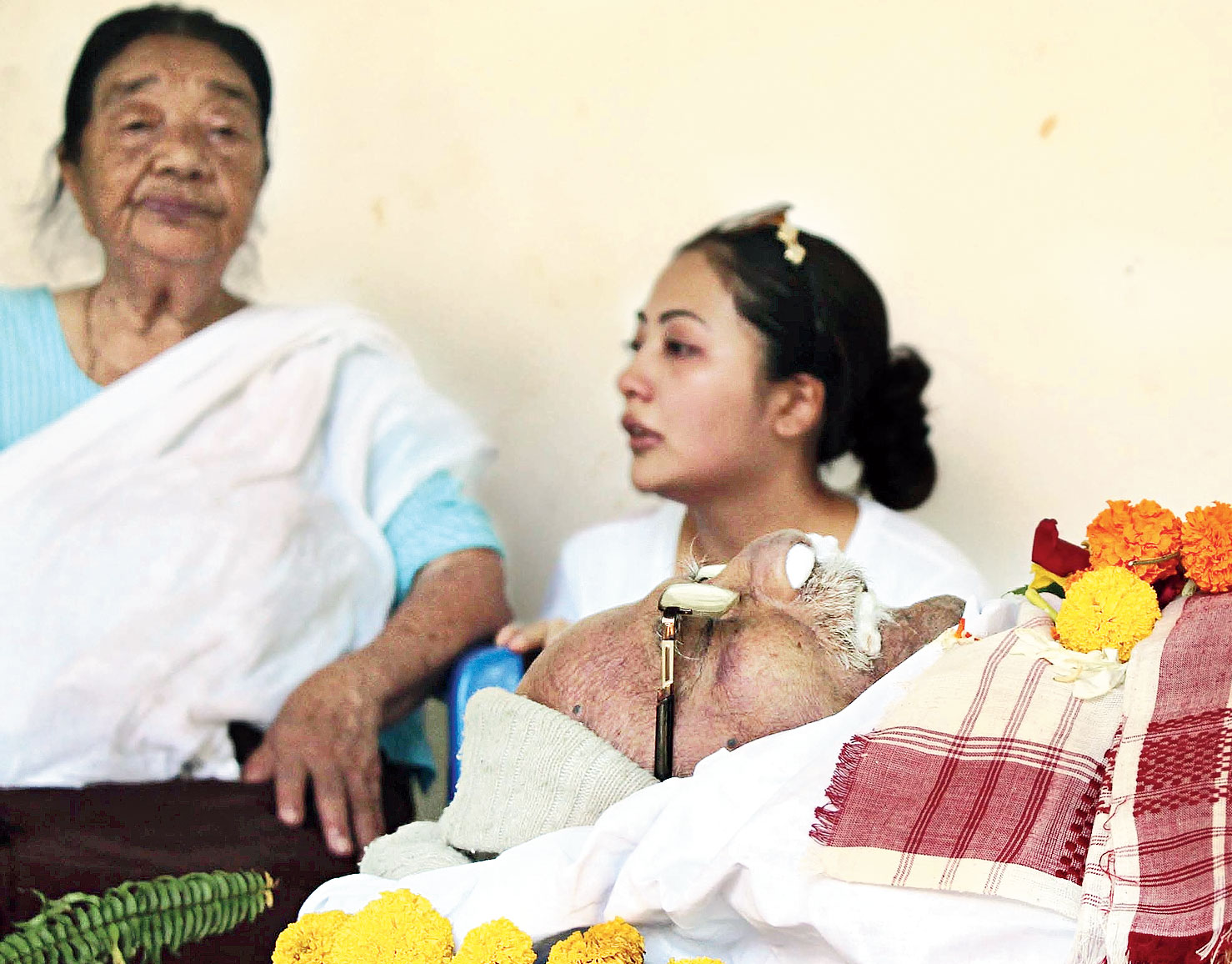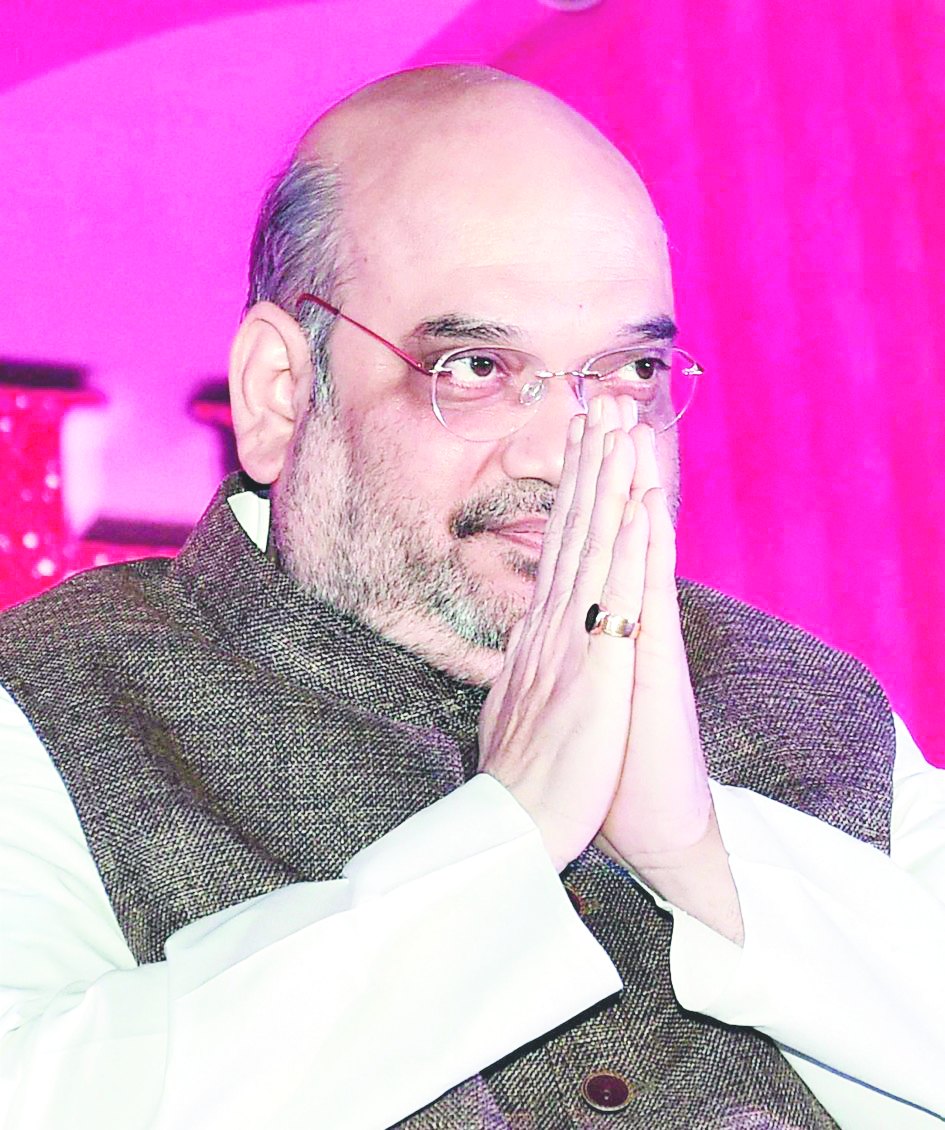Nagaland is one of only three states of the Indian Union that I have not visited. I had planned to go there next February, at the invitation of Natwar Thakkar, a social worker whom I had corresponded with but never met. Born in western India in 1932, Natwarbhai came under the influence of the Gandhian and patriot, Kaka Kalelkar, and as a young man chose to devote his life to social service. He went to Nagaland in 1955 and established an ashram in a village called Chuchuyimlang, about 30 miles from the town of Mokokchung.
The year after Natwar Thakkar moved to Nagaland, the insurgency led by A.Z. Phizo intensified and the Indian army moved in to suppress it. Natwarbhai married a Naga lady, Lentina Ao, and with her lived through 40 years of brutal conflict, raising a family, seeking and serving. The couple focused on establishing cottage industries and on vocational training among Naga youths. They started a dairy, and encouraged sericulture and beekeeping.
The Nagaland Gandhi Ashram was visited by Morarji Desai in November 1978, when Thakkar’s fellow Gujarati-speaking Gandhian was prime minister. Four years later, a future prime minister came visiting. This was Manmohan Singh, at the time a member of the Planning Commission, an economist with policy interests and absolutely no political ambition. After spending a day with Natwar Thakkar and his colleagues, Singh wrote: “This Ashram is doing excellent work which is of tremendous significance in making programmes of decentralized development a success. Humanising development, improving productivity of work while retaining identity and self-respect of human beings is the most challenging task. The Gandhian approach to these vital issues provides exciting opportunities. In this Ashram I saw a harmonious blend of machine and human labour.”
I first heard of Natwar Thakkar in the 1980s, while working on a biography of the British-born Indian anthropologist, Verrier Elwin. Elwin had lived for extended periods in the Sabarmati Ashram, attracted by Gandhi’s interfaith credo and his personal charm. However, in later years, and as a result of living with the adivasis in central India, he came to distance himself from the Mahatma’s puritan attitudes towards food and alcohol. In Elwin’s papers I found a letter written in 1959, describing with delight the pork he had eaten and the rice beer he had drunk on a visit to a professedly ‘Gandhian’ ashram in Nagaland.
Sadly, Natwar Thakkar died this past October, and so I will not get to meet a man I exchanged many mails with. However, my resolve to visit the state he made his own has been renewed by reading Rupa Chinai’s recent book, Understanding India’s Northeast — A Reporter’s Journal. The longest chapter of this book is on Nagaland; it draws on many visits to the state over the years. Chinai writes with sensitivity and feeling about the costs of the conflict between the rebels and the Indian army, a conflict that has “extracted a huge toll on the civilian population in terms of lives lost, stagnant development, psychological and physical stress and fratricide within Naga society”.
Chinai justly criticizes the policies of successive Central governments, which have imposed a standardized form of ‘Indian’ education which takes no account of the specificities of Naga life, and which, in the name of development and aid, has promoted a nexus of corruption between businessmen, bureaucrats, and politicians. As she writes: “The sub-standard public roads, drains and buildings; the palatial private bungalows and over-stuffed wallets of their children — bear testimony to how ‘development aid’ has been converted to ‘easy money’ that nurtures the luxuriant lifestyles of the creamy layer of urban Naga society. It has seen the creation of an elite class in Naga society’s egalitarian ethos, which thrives because of the insurgency conditions and the inflow of ‘easy money’. All this has been at the expense of Naga villagers who have not received a share in prosperity. They provide the bulk of the cadres for the insurgency movement.”
In 1964-5, when the insurgency was less than a decade old, Jayaprakash Narayan went to Nagaland to seek to bring about reconciliation between the Indian State and the rebels. He travelled through the hills and valleys, profoundly impressed by the egalitarian ethos of those who lived and laboured there. After he returned to Patna, JP gave a public lecture entitled “Nagaland mein shanti ka prayas” (The Search for Peace in Nagaland). Here he remarked:
“People here [in the Indian heartland] think of Nagas as uncivilized. But if one travels there one sees how advanced they are... Let me give you an example. Near the town of Mokokchung is a village named Ugma, which is perhaps the largest village in Nagaland. About four thousand people are resident here. There is a very big church there. This is bigger than any church found in Assam or elsewhere in this region. It has a seating capacity of five thousand. You will be astonished to learn that the church was built entirely by the voluntary labour of villagers. They used no material nor any expertise from outside. You may not believe this, but they did not even need an engineer from outside to help them construct this church. The people of the village built it themselves. And the church is so beautiful! Not just this church, even high schools were built by the villagers themselves. And these schools are very pretty too. Wood and bamboo are freely available here… But the most remarkable thing is their spirit of service. A Naga even if he has a B.A. or M.A. degree, does not consider physical labour to be beneath his dignity. The deficiencies that one finds in educated people elsewhere in India are absent here. If a boy comes home on holiday, he would happily help his parents in the fields or in housework. What we [Gandhians] try to teach under the rubric of ‘basic education’ is already part of the teaching here… The greatest quality of the Nagas is the dignity of labour in daily life, which we can learn from” (my translation).
Rupa Chinai’s book appears more than 50 years after JP said these words. Yet is heartening to see that for all the insecurities caused by decades of bloody violence, and the moral corrosion caused by years of State-aided corruption, there remains a deep reservoir of communal solidarity within Naga society. Chinai describes the workings of the intricate system of irrigation management in Naga villages, the taking of water to each field through stones and pipes that divert and regulate its flow. She also provides a vivid account of the building of a new house of a friend, in which every adult male in the family participated, a living example of that great Naga quality, “the dignity of labour in daily life, which we can learn from”.
Natwar Thakkar’s life’s work was to forge an honourable compact between the Nagas and the Indian Union. He sought reconciliation, based on respect for the culture and ethos of the Nagas; not assimilation based on the submergence of proud traditions of community living into some homogenized way of life prescribed by ideologues. He is gone, but I hope still to visit the state he made his own, and his ashram too. I trust it still serves pork and rice beer.













